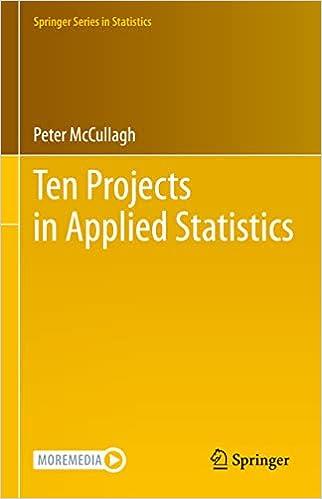Distributional invariance. Consider a simplified version of the louse model in which there are 16 feral and
Question:
Distributional invariance. Consider a simplified version of the louse model in which there are 16 feral and 16 giant runt pigeons, no sex differences between lice, and no correlations among measurements. Two lice are associated with each bird at baseline, and two at each subsequent time \(t=1, \ldots, 7\) for a total of 512 observations. Each louse \(u\) is associated with a host type \(h(u)\), feral or giant runt, and the joint distribution is Gaussian with moments
\[
E\left(Y_{u}ight)=\beta_{0}+\beta_{h(u)} t_{u} ; \quad \operatorname{cov}\left(Y_{u}, Y_{u^{\prime}}ight)=\sigma^{2} \delta_{u, u^{\prime}} .
\]
A baseline permutation is a 1-1 mapping \(u \mapsto \tau(u)\) such that \(t(u)>0\) implies \(\tau(u)=u\). Distributional invariance means that the permuted vector \(Y^{\tau}\) with components \(Y_{u}^{\tau}=Y_{\tau(u)}\) has the same distribution as \(Y\). Show that the joint distribution is invariant with respect to baseline permutations. Note that \(h(\tau(u))\) is not necessarily equal to \(h(u)\).
Step by Step Answer:






